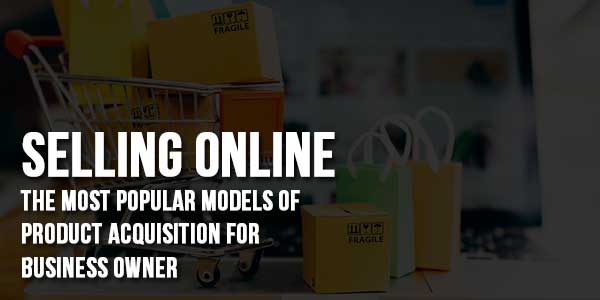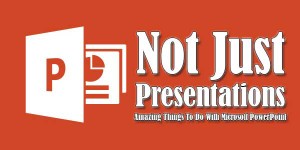
The future of the e-commerce industry is very promising due to social and economic factors influencing its development. Researches show that online shopping is one of the most popular online activities worldwide now. At the same time, starting an e-commerce business is hard and multifaceted, requiring numerous steps that need to be made together at the right time.
When you come up with an idea to start selling online – this is just the beginning. The next step you should take is to define how you are going to acquire the products you plan to sell.
There are 4 main business models of product acquisition for the e-commerce store nowadays:
- Handmade/in-house production
- Outsourcing
- Wholesale purchases
- Dropshipping
You need to be aware of each business model in detail to make the right decision for your e-commerce store. Each model has its own pros and cons, and depending on a product, target market, niche, and budget, the one can be more suitable for your business than the other.
Let’s dive deeper into each product acquisition model.
Table of Contents
1.) Handmade/In-House Production:
This is the most popular model among those people who are looking for a way to monetize their hobby (production of jewelry, organic cosmetics, clothes, accessories). Handmade doesn’t obviously mean that you create products on your own. You can manufacture them both with the help of employees or by means of your own small manufacturing enterprise.
This business model allows you to precisely control the quality of products and develop your own brand but has scalability limitations.
The main costs that arise when your handmade products for your store are divided between:
- Purchase of raw materials
- Inventory storage
- Labor costs
Who Is It Suitable For?
This model is the best fit for those entrepreneurs who:
- Have a unique business idea.
- Can handmade products.
- Have all the necessary resources.
- Want to have full control over quality and an own brand.
- Prioritize minimization of costs for stocktaking.
Advantages:
- Low startup costs. When you manufacture products yourself, you don’t need to produce many items of product at once – just release a few to create a beautiful catalog. This business model maintains low manufacturing costs, which represent the main expenditures for many e-commerce businesses.
- Brand management. Handmade means that you can set your own rules and develop a brand that fully represents your vision, values, and creativity.
- Price management. You are free to set up any price which you believe is fair for your products as you probably won’t have any direct competitors on the market.
- Quality control. Being a manufacturer yourself, you can control the quality of created products to align them with your business principles and the expectations of your customers.
- Flexibility. Handmade provides 100% flexibility to business owners as you can quickly control quality, features, and even the whole product concept on the go. For example, you manufacture bracelets. And few of your customers sent complaints about the quality of a clasp. No problem, you can easily change it with the next product. As you don’t produce thousands of bracelets, your costs won’t rise exponentially.
- Low risks. Usually, the handmade model is not characterized by high financial risks. As you create products on your own, you can manufacture them along with the incoming orders. It enables you to start a business easily, test the niche before investing much effort, time and money.
Disadvantages:
- Time. Handmade can be very time-consuming. You need to spend much time on product production – this limits your capabilities for business management and brand development.
- Scalability. If customers are acquainted with the quality of your products, they used to receive something “special” with their orders, most probably they will notice if you plan to outsource manufacturing. If your products are unique in some way, this is the additional reason you will find issues with the selection of a reliable outsourcing company. The option you can consider in this situation is to create your own manufacturing company which will lead to additional costs.
- Limited product assortment. The variety of products you can offer to customers is limited by your skills and available resources. Selling similar products makes it more complicated to increase the average order value in your store.
- Price margin. The price margin is usually high in a handmade model as you have more control over costs and price. Nevertheless, you need to take into account time for production. It influences the quantity of potentially salable products per month and may lead to low profits. You can earn little no matter the high price margin.
2.) Outsourcing
Another way to acquire products for your e-commerce store is to find a production plant or a factory. When searching for a manufacturer, you can choose the one in your country or find some abroad.
On the one hand, local manufacturers cost more than manufacturers from such countries as China, Taiwan, and India. But on the other hand, it will be easier for you to establish business communications with local manufacturers and you will have no obligations related to product import.
Who Is It Suitable For?
This e-commerce business model is a perfect choice for:
- Those who have a unique idea or modern variation of an existing product.
- Established businesses in the niche that have guaranteed sales volumes.
Being sure that your product will have a certain number of sales during a period is the most important point when considering an outsourcing model for your business. It requires the biggest financial investments, so can be difficult for young and small businesses.
Advantages:
- The lowest cost per unit. The more products you produce, the lower net cost and the higher profit you have per product.
- Brand management. Outsourcing allows you to control products’ production and at the same way manage your brand like when you handmade these products.
- Price management. Along with the ability to create your own brand, it becomes possible to set your own prices for a product – it is still unique on the market in some way and you can be its only seller.
- Quality control. Unlike other business models (dropshipping or wholesale purchase), allows you to strictly control the quality of end products.
- Price margin. Outsourcing also enables you to have a high price margin. But definitely, it also depends on the products you create, their quality, and production volume.
Disadvantages:
- Minimum order. The biggest disadvantage of outsourcing is the startup costs required for the beginning of production. Manufacturers usually have a minimum order quantity (MOQ), so you may need to order 1000 items from the very beginning. MOQ depends on the product type, manufacturer policy, and the whole order you make from an outsource. So don’t be shy to discuss all conditions before the start of cooperation.
- Fraud and import problems. When choosing this model you are not insured by non-professional manufacturers that can let you down with the quality of a product and production terms. You can also face issues organizing delivery, dealing with import, and more.
- Time. The pre-production period will probably take the most time. There is a need to work out product samples, choose proper materials, conclude an agreement, set up operational processes from the order placing to delivery to your warehouse.
- Lack of sales guarantees. The higher profit, the higher risk of profit loss. You need to acquire products to your warehouse without a guarantee you sell them fully. Simply said, there is a possibility you will not return your investments.
- Inventory management. Having a certain amount of products, you need to have a warehouse and take care of inventory management and control.

3. Wholesale Purchases
The most straightforward and simplest strategy for starting an e-commerce business is to purchase already existing (sometimes well-known) products from established manufacturers at a wholesale price and resell them at a higher price.
Wholesale purchase is a business model with lover risks comparing to outsourcing as:
- You deal with brands that have an established reputation on the market, so you don’t need to invest the time and money required for establishing product production.
- MOQ in this model is usually lower than in outsourcing. The first investments in business will be much lower.
Who Is It Suitable For?
This e-commerce strategy is the ideal option for those who:
- Want to return investments quickly.
- Want to sell different products, brands and offer a wide range of products to customers.
Advantages:
- Brand awareness. As you sell products of well-known brands, there are the lowest risks you won’t find buyers for these products.
- Simplicity with your brand positioning. Selling popular products helps you gain a reputation on the market and simplifies brand positioning.
Disadvantages:
- High competition. Selling popular products is an advantage and disadvantage at the same time. Such products are widely available among different sellers, so you need to fight competition and convince customers to buy from you.
- Product price is hardly controlled. Selling products of established brands means you need to play by rules already established on the market. Some brands regulate prices for their products to prevent product price discounting.
- Inventory management. Making wholesale purchases you have a minimum quantity of each product, and it is logical that you have to store it somewhere and properly manage it to fulfill orders.
- Supply chain management. If you enter a market with a variety of product types, there is a high chance you need to purchase it from a large number of suppliers. Each supplier can have its own policy, requirements, model of cooperation, and you need to maintain business relationships with each.
- Price margin. This model is the safest option between in-house production and dropshipping. The price margin is higher than in dropshipping and slightly lower than in in-house production and usually reaches 30%.
- Lack of sales guarantees. Suppliers require MOQ and there is no guarantee you sell all these products during a certain period of time.
4.) Dropshipping:
This business model is highly popular in the USA. The main concept here is that you sell products you don’t actually have in stock. You accept an order and forward it to your partner (supplier or manufacturer) to fulfill it under your company name.
The biggest advantage of dropshipping is the ability to offer a wide range of products without the need to invest in production or wholesale purchase, and inventory management. It is the perfect way to test the niche on the market.
Who Is It Suitable For?
This e-commerce model meets the needs of entrepreneurs that:
- Want to minimize startup costs or don’t have a budget for the initial investment.
- Don’t put high margin and profits in the first place.
- Plan to sell in different locations.
Advantages:
- Low startup costs. You don’t need to invest in acquiring the inventory and don’t need to have a warehouse to store it, your initial investments for having an e-commerce business are minimal.
- Low risks. As you actually don’t purchase products for the stock, you totally eliminate the risk of going into debt because of low sales volumes.
- Flexibility. Dropshipping provides convenience and efficiency because you can manage your business from any location in the world choosing the proper supplier of your products.
Disadvantages:
- High competition. Dropshipping has a low market entry barrier and you don’t sell unique products, obviously, you face the most intense and stiff competition.
- Low price margin. Dropshipping has the lowest price margin for products among all business models. If you are not ready to invest in advertising and struggle with competitors at the beginning, you will spend much time gaining a reputation in the market and making sales. You will have to take care of additional services to engage customers and build loyalty. A low margin also means that you have to sell more to make profits. The highest margin with dropshipping reaches 20%.
- Minimal control overstock. As you don’t manage stock personally, there is a high chance you are not fully aware of the exact stock balances. You can sell a product that is actually not in stock or has already discontinued. It will influence your reputation, brand, and customer retention.
- No control over quality. When you produce products on your own or purchase them from suppliers, you can make incentivization and check their quality before sending it to a customer. Using dropshipping there is no guarantee your customer will receive a qualitative product. Nevertheless, you have to be responsible for the quality and deal with customer complaints, if they receive spoilage.
- The complicated process of brand development. Using dropshipping as a business model, you have fewer options for the development of your own brand. You don’t know what kind of packaging and labels the supplier will use when fulfilling an order for your customer. Yes, there is a chance that you can negotiate unique packaging and branding with the supplier, but again because of low control here, you can’t be sure everything will go smoothly. You can build your brand with dropshipping, but this will be pretty hard.
84% of e-commerce retailers cite finding a good supplier as the biggest obstacle to getting their business going. In order to succeed with dropshipping you need to put much time and effort to find reliable suppliers, agree on unique branding and eliminate all other disadvantages of this business model.
Final Thoughts
The described strategies of product acquisition for e-commerce businesses are the most popular now. Each of them has its own pros and cons, and it doesn’t mean you have to align with one particular option for your business. You can mix these business models to lower your risks and reach profits faster.

 About the Author:
About the Author:
















Thanks for a such wonderfully SEO informations, very useful and major important factor of seo.
Welcome here and thanks for reading our article and sharing your view.
Thanks for providing this informative article.
Welcome here and thanks for reading our article and sharing your view. This will be very helpful to us to let us motivate to provide you with more awesome and valuable content from a different mind. Thanks again.